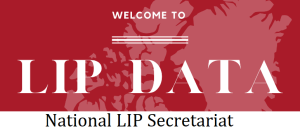Completed Post-Secondary Education Age 15+: Census
EDUCATION
Apprenticeship or Trades: Includes receipt of a Certificate of Apprenticeship, Diploma of Apprenticeship, Certificate of Qualification, or Journey-person’s designation in a trade. It also includes qualifications obtained from brief trade programs taken at community colleges, institutes of technology, vocational centres, and similar institutions.
College or CEGEP (Collège d’enseignement général et professionnel): Includes certificates or diplomas obtained from a community college; a CEGEP (both general and technical); an institute of technology; a school of nursing; a private business school; a private or public trade school; or a vocational school.
Completed Post-Secondary Education: Includes educational attainment above a high school certificate.
Educational Attainment: Refers to the highest level of education that a person has successfully completed.
High School or Equivalent: Includes graduation from a secondary school or receipt of an equivalency certificate such as General Educational Development (GED) or Adult Basic Education (ABE).
Location of Post-Secondary Study: Refers to the location of the institution from which the highest post-secondary certificate, diploma, or degree was obtained. It does not refer to where the person lived at the time they were studying through the institution or when they obtained the qualification.
Post-Secondary Field of Study: Refers to the predominant discipline or area of learning or training of a person’s highest completed post-secondary certificate, diploma, or degree.
University at Bachelor’s Level or Above: Includes degrees obtained through universities and other degree-granting institutions, including degree-granting colleges.
University below Bachelor’s Level: Includes university certificates or diplomas that are awarded for non-degree programs of study completed through a university. They are often connected with professional associations in fields such as accounting, banking, insurance, or public administration. The certificates and diplomas referred to in this category do not require a bachelor’s degree as a prerequisite.
SOURCE DATA
2006 Dashboard Data: Statistics Canada. 2006. Census of Population. Custom tabulations.
2016 Dashboard Data: Statistics Canada. 2016. Census of Population. Custom tabulations.
2021 Dashboard Data: Statistics Canada. 2021. Census of Population. Custom tabulations.
Definitions: Statistics Canada. 2023 (updated). Dictionary, Census of Population, 2021. Website.

 Completed Post-Secondary Education Age 15+: Census in the Sustainable Development Goals
Completed Post-Secondary Education Age 15+: Census in the Sustainable Development Goals
Click on the SDG to reveal more information
4. Ensure inclusive and quality education for all and promote lifelong learning
Obtaining a quality education is the foundation to improving people’s lives and sustainable development. Major progress has been made towards increasing access to education at all levels and increasing enrolment rates in schools particularly for women and girls. Basic literacy skills have improved tremendously, yet bolder efforts are needed to make even greater strides for achieving universal education goals. For example, the world has achieved equality in primary education between girls and boys, but few countries have achieved that target at all levels of education.
Related Completed Post-Secondary Education Age 15+: Census Targets
By 2030, ensure equal access for all women and men to affordable and quality technical, vocational and tertiary education, including university
By 2030, eliminate gender disparities in education and ensure equal access to all levels of education and vocational training for the vulnerable, including persons with disabilities, indigenous peoples and children in vulnerable situations



